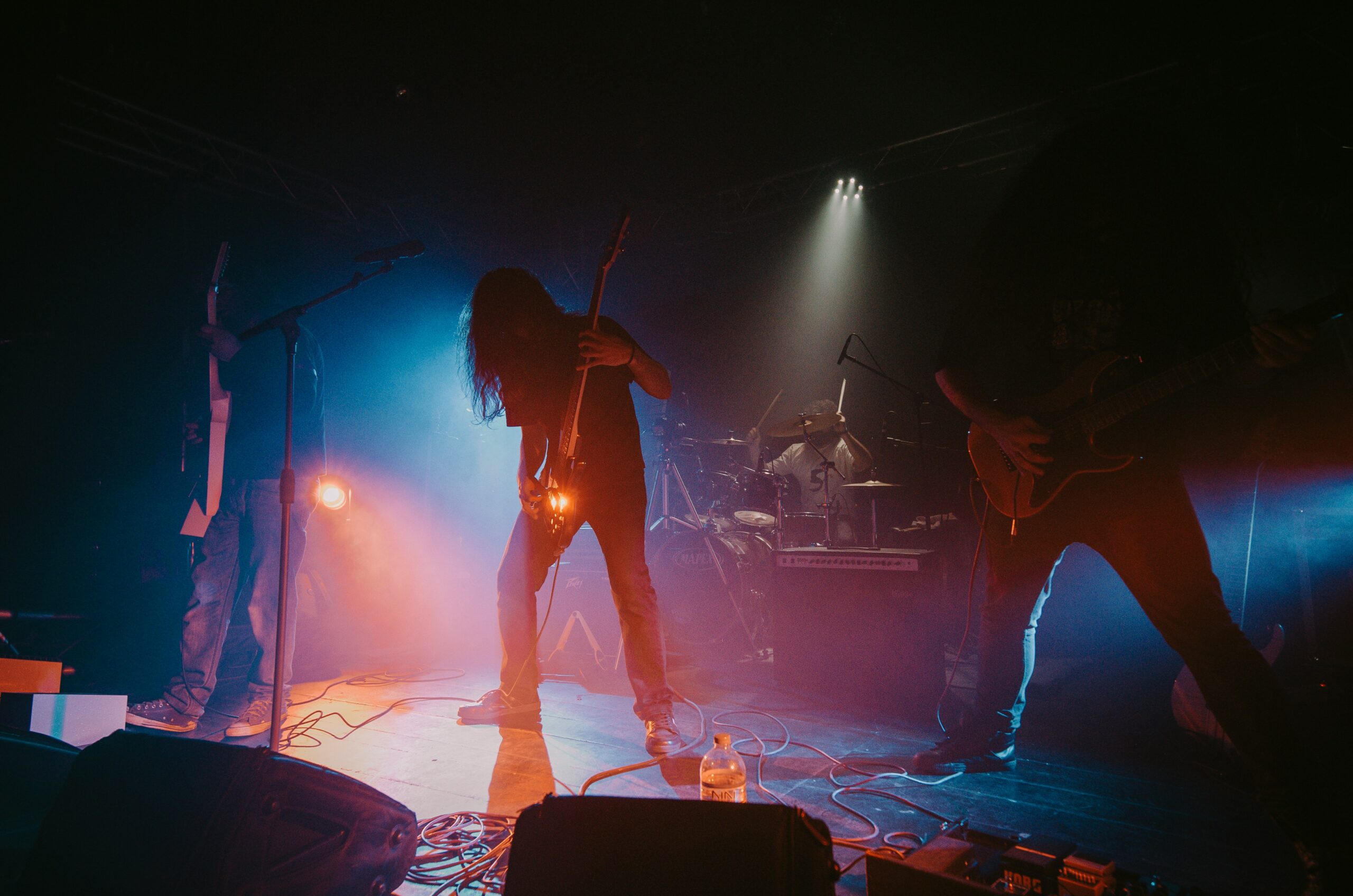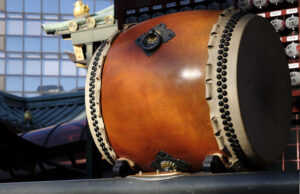In the land of the rising sun, where tradition intertwines with futuristic innovations, a thunderous wave has been shaping the cultural landscape for decades. This resonance comes from the strings and screams of heavy metal, a genre that has not only found a fervent following in Japan but has also significantly influenced its culture. From the high-energy performances of X Japan to the viral sensations of Babymetal, the country has embraced metal in its own unique way, integrating it with traditional elements and creating a global impact. This article delves into the depths of how heavy metal has struck chords across Japan, from its rise in the local scene to its booming echo around the world, and explores the facets of Japanese society that have been touched by this powerful genre.
Striking Chords: The Rise of Metal in Japan
The genesis of heavy metal’s journey in Japan can be traced back to the 1980s when bands like Loudness broke onto the scene, capturing the attention of the youth and planting the seeds of what would become a flourishing metal community. This period saw an influx of Western bands touring the country, but it was the emergence of homegrown talent that truly signified the genre’s establishment. Groups such as X Japan and Earthshaker began to rise, blending speed and power metal influences with a distinct visual flair that appealed to the Japanese audience. Record labels, initially hesitant, soon realized the potential and began to invest in the genre, facilitating its growth. Radio and television also played pivotal roles, with stations dedicated to rock and metal music introducing the masses to the thunderous sounds of metal. Magazines and fanzines flourished, creating a network of communication and community among fans.
Loud and Proud: How Metal Rocked Japan’s Core
Heavy metal resonated with the Japanese youth for its intense energy and the freedom of expression it offered. In a society known for its stringent social norms and emphasis on conformity, metal provided an outlet for rebellion and personal expression. Concerts became cathartic gatherings where fans, adorned in band merchandise and leather, could mosh and headbang away from the pressures of daily life. The genre’s themes of individualism, strength, and defiance struck a chord, particularly among those feeling disenchanted with the rigid expectations of Japanese society. Bands like Anthem and Galneryus gained popularity, their lyrics often touching on themes of perseverance and self-identity, further solidifying metal’s appeal.
The Samurai Spirit: Metal’s Echo in Japanese Culture
Interestingly, heavy metal’s ethos of strength, honor, and resilience found a parallel in the revered samurai spirit of Japan. Bands frequently draw on historical and mythological themes, infusing their music with a sense of epic storytelling and traditional values. This fusion created a sub-genre that feels distinctly Japanese, marrying the raw power of metal with the country’s rich cultural heritage. Lyrics often explore tales of samurai battles, folklore, and the Bushido code, resonating deeply with fans and adding a layer of cultural significance to the music. This blending of past and present has helped metal carve out a unique niche within Japan, one that pays homage to its ancestral roots while screaming into the future.
From X Japan to Babymetal: A Legacy Unfolds
X Japan, with their symphonic compositions and theatrical performances, laid down the foundation for what would become a burgeoning scene. They were pioneers, not just in sound but in visual presentation, setting the stage for future acts to innovate. Years later, Babymetal would emerge as a global phenomenon, their unique mix of J-pop and heavy metal earning them a spot on some of the world’s biggest stages. This evolution from the classic, shred-heavy riffs of X Japan to the genre-bending theatrics of Babymetal showcases the versatile nature of Japanese metal, its ability to adapt, and remain relevant across generations. These bands have not only contributed significantly to the genre’s development but have also served as cultural ambassadors, bringing Japanese music to the global forefront.
Visual Kei: Flamboyance Meets Heavy Metal
Visual Kei, a movement that emerged in the late ’80s, represents the theatrical and flamboyant aspect of Japanese heavy metal. Characterized by elaborate costumes, makeup, and theatrics, bands like Dir En Grey and the GazettE have blurred the lines between music, fashion, and performance art. This emphasis on visual presentation has attracted a diverse fanbase, intrigued by the fusion of heavy metal’s intensity with the aesthetic appeal of glam rock. Visual Kei bands often explore themes of fantasy, romance, and existential angst, their music videos and live shows akin to cinematic experiences. This style has contributed to the global perception of Japanese metal as not only a genre of music but a form of artistic expression.
The Fusion Beat: Traditional Sounds in Modern Metal
A distinctive feature of Japanese metal is its incorporation of traditional instruments and melodies into the heavy metal framework. Bands like Wagakki Band have gained popularity by using instruments such as the shamisen, koto, and taiko drums, creating a sound that is both fresh and deeply rooted in Japanese tradition. These fusion acts highlight the genre’s versatility and its capacity to evolve by embracing elements from the country’s musical heritage. The result is a captivating blend that appeals to both metal enthusiasts and fans of traditional Japanese music, bridging generational gaps and expanding the genre’s reach.
Women in Metal: Japan’s Fierce Frontwomen
Japan’s metal scene has seen a rise in female-fronted bands, challenging the genre’s traditionally male-dominated landscape. Acts like Aldious, Lovebites, and the aforementioned Babymetal have proven that women can not only front metal bands but can also redefine their sound and image. These artists bring a blend of power, elegance, and ferocity to their performances, inspiring a new generation of female musicians. Their success has encouraged more women to pick up instruments and step onto the stage, contributing to a more inclusive and diverse scene.
Metal Festivals: Japan’s Temples of Rock
Annual festivals like Loud Park and the more recent Download Festival Japan have become meccas for metal fans, drawing crowds from all over the country and beyond. These gatherings are not just concerts but celebrations of the genre, showcasing a wide range of acts from legendary international bands to emerging local talents. They serve as a testament to the genre’s popularity and its ability to unite fans across different backgrounds in a shared love for heavy music.
Crossing Borders: Japanese Metal’s Global Influence
Japanese metal bands have made significant inroads into international markets, touring extensively and performing at major festivals alongside Western acts. The genre’s global appeal can be attributed to its unique blend of musicality, visual artistry, and theatricality, setting it apart from its Western counterparts. Bands like Crossfaith and Crystal Lake have garnered a following overseas, their music resonating with a broad audience and earning them spots on international charts. This cross-cultural exchange has not only elevated the profile of Japanese metal bands but has also introduced new sounds and styles into the global metal scene.
Fans and Fanaticism: The Devotees of Japanese Metal
The fervor of Japanese metal fans is legendary, their dedication evident in the elaborate costumes, extensive merchandise collections, and the vibrant online communities they build. Fans are not just passive listeners but active participants, their enthusiasm helping to sustain and grow the scene. Band fan clubs often organize events, charity drives, and meet-and-greets, fostering a sense of community and belonging among fans. This passionate fanbase is a crucial component of the genre’s enduring success and vitality in Japan.
The Darker Tunes: Metal’s Role in Anime and Games
Heavy metal has found an unlikely ally in the world of anime and video games, genres that are colossal in their own right within Japanese culture. Bands like Maximum the Hormone and Fear, and Loathing in Las Vegas have contributed tracks to popular anime series, their music amplifying the intensity and drama of the animation. Video games, too, have adopted metal scores for battle scenes and trailers, the genre’s energy perfectly complementing the on-screen action. This crossover has helped metal reach a wider audience, embedding it further into the fabric of Japanese pop culture.
Looking Ahead: The Future of Metal in Japan
As the world becomes ever more connected, the future of heavy metal in Japan looks bright. The genre continues to evolve, drawing in new fans with its constant innovation and willingness to experiment. With the rise of digital platforms, Japanese metal bands have unprecedented access to global audiences, and collaborations between Japanese and international artists are becoming more common. As it moves forward, the Japanese metal scene is poised to continue its legacy of creativity and influence, both at home and abroad, ensuring that the chords it strikes continue to resonate for generations to come.
Heavy metal’s journey through Japanese culture is a testament to the genre’s universal appeal and its ability to adapt and thrive in diverse environments. From the early days of X Japan to the global phenomenon of Babymetal, the scene has grown and evolved, leaving an indelible mark on the cultural landscape. The fusion of traditional elements, the rise of female empowerment, and the embrace of visual and theatrical extravagance have all contributed to the unique flavor of Japanese metal. As it continues to influence fashion, gaming, and even anime, the genre promises to remain a vibrant and vital part of Japan’s artistic expression. Striking chords both familiar and new, heavy metal in Japan stands as a powerful reminder of music’s ability to cross boundaries, challenge norms, and unite people across the world.






